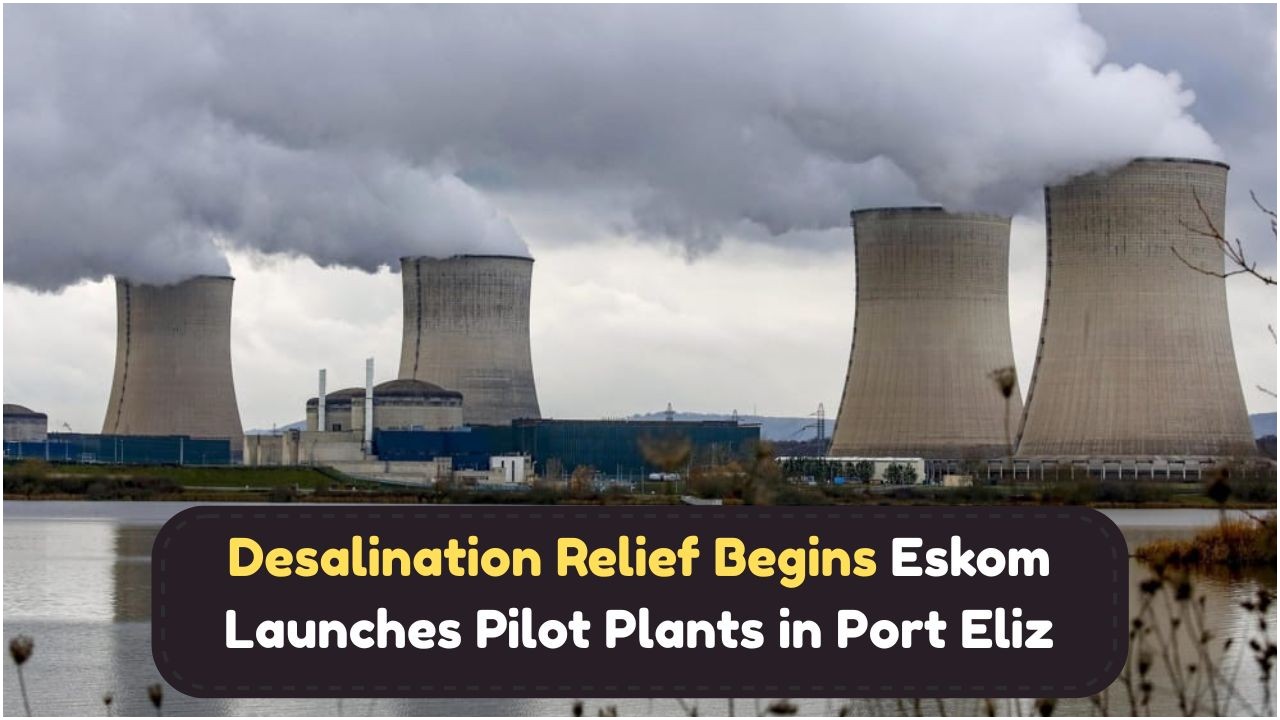Eskom October Energy Milestone: In a significant development for South Africa’s energy landscape, Eskom has achieved a remarkable milestone this October by launching Kusile Unit 6, which adds an impressive 800 MW to the national grid. This comes as a relief in the ongoing battle against load shedding, a challenge that has long plagued the country. The introduction of this new unit is not just about increasing energy capacity, but also about boosting the overall morale of a nation eager for consistent power supply. As Eskom continues to strive towards a more sustainable energy future, the launch of Kusile Unit 6 marks a pivotal step in that direction. The addition of these megawatts is expected to ease the pressure on South Africa’s electricity supply, offering hope for fewer disruptions in daily life and business activities.
Kusile Unit 6 Launch and Its Impact on Load Shedding
The launch of Kusile Unit 6 is a significant leap forward in Eskom’s ongoing efforts to stabilize the national power grid. This new unit, contributing 800 MW, is a beacon of hope for many South Africans who have grown accustomed to the challenges of load shedding. By increasing the energy capacity, Eskom aims to mitigate the frequency and severity of power cuts that have disrupted the daily lives of individuals and businesses alike. This addition is crucial at a time when the demand for electricity is soaring due to growing urbanization and industrialization. With more energy fed into the grid, Eskom anticipates a reduction in the load shedding incidents, thus ensuring a smoother and more reliable power supply across the nation.
- The 800 MW addition is expected to significantly reduce the occurrences of load shedding.
- Kusile Unit 6 represents one of the largest single contributions to the grid in recent years.
- This milestone is a part of Eskom’s broader strategy to enhance energy security.
- It underscores Eskom’s commitment to meeting growing energy needs sustainably.
- The new capacity is intended to support economic growth by providing stable power.
Technological Innovations at Kusile Power Station
Kusile Power Station, a cornerstone in Eskom’s infrastructure, has integrated state-of-the-art technologies in its latest unit to ensure efficiency and sustainability. The use of advanced emissions reduction technology is a key feature that sets this project apart, aiming to minimize the environmental impact of power generation. Such innovations are vital as South Africa moves towards cleaner energy solutions while balancing the immediate need for reliable electricity. These technological advancements not only enhance the operational efficiency of the power station but also contribute to Eskom’s goals of reducing its carbon footprint.
 SASSA's R370 Christmas Grant: Early Payment Alert for December 23rd - Check Your Bank Notifications!
SASSA's R370 Christmas Grant: Early Payment Alert for December 23rd - Check Your Bank Notifications!
| Feature | Benefit |
|---|---|
| Advanced Emissions Reduction | Minimizes environmental impact |
| Increased Efficiency | Reduces operational costs |
| Improved Reliability | Enhances grid stability |
| Innovative Cooling Systems | Optimizes energy use |
Economic and Social Benefits of the 800 MW Addition
The introduction of 800 MW from Kusile Unit 6 brings with it a multitude of economic and social benefits. For the economy, a stable electricity supply is a catalyst for growth, enabling businesses to operate without the frequent interruptions caused by load shedding. This stability is crucial for sectors such as manufacturing and services, which are heavily reliant on uninterrupted power. On a social level, the reduction in power outages allows for a better quality of life, contributing to improved productivity and well-being among citizens. Additionally, the launch of Kusile Unit 6 is expected to create job opportunities, both directly and indirectly, as the demand for skilled labor and support services increases.
 Eskom Launches Desalination Pilot Plants in PE This September to Tackle SA's Water Crisis!
Eskom Launches Desalination Pilot Plants in PE This September to Tackle SA's Water Crisis!
- Enhanced business productivity due to fewer interruptions.
- Increased investor confidence in South Africa’s energy sector.
- Creation of job opportunities in energy and related sectors.
- Improved quality of life with more reliable power supply.
- Promotion of sustainable economic growth.
Future Prospects for South Africa’s Energy Sector
| Aspect | Future Prospect | Impact |
|---|---|---|
| Renewable Energy Integration | Increased Investments | Reduced carbon emissions |
| Grid Modernization | Advanced Technologies | Enhanced reliability |
| Energy Efficiency Initiatives | Widespread Adoption | Lower consumption costs |
| Government Support | Policy Frameworks | Increased sector growth |
Challenges and Opportunities in Energy Development
While the launch of Kusile Unit 6 is indeed a milestone, the journey towards a stable energy future is fraught with challenges. Among these are the need for substantial investments in infrastructure, the integration of renewable energy sources, and the development of skills to operate and maintain advanced technologies. However, these challenges also present opportunities. The global shift towards cleaner energy opens doors for South Africa to become a leader in renewable energy technology, while the need for infrastructure development could drive innovation and economic growth.
- Investment in new technologies is a significant challenge.
- Expanding renewable energy sources offers growth opportunities.
- Skill development is critical for maintaining new systems.
- Infrastructure upgrades are necessary for modernizing the grid.
Strategies for Overcoming Energy Sector Hurdles
| Strategy | Objective |
|---|---|
| Investment in R&D | Foster innovation |
| Public-Private Partnerships | Enhance resource allocation |
| Government Incentives | Encourage renewable adoption |
| Skill Development Programs | Equip workforce |
FAQ on Eskom’s Energy Milestone and Load Shedding
- What is the significance of Kusile Unit 6’s launch?
The launch adds 800 MW to the grid, significantly reducing load shedding and stabilizing electricity supply. - How does this affect South Africa’s energy reliability?
The additional capacity helps ensure a more consistent power supply, benefiting both individuals and businesses. - What technologies are used at Kusile Power Station?
Advanced emissions reduction and innovative cooling systems are among the key technologies implemented. - What economic benefits arise from this addition?
It boosts business productivity, creates jobs, and enhances investor confidence in the energy sector. - How does Eskom plan to overcome future energy challenges?
Strategies include investing in R&D, enhancing public-private partnerships, and developing skills programs.






